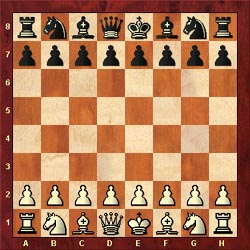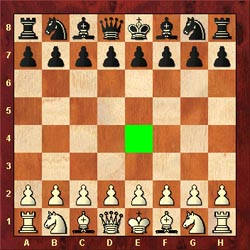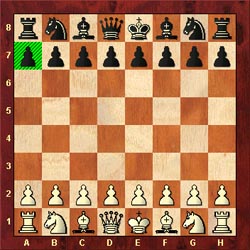|
This method of identifying squares is used when keeping score and is called algebraic notation. In this notation each piece (except for the pawn) is identified by a letter. The King="K" Queen="Q" Rook="R" Bishop="B" Knight='N". For example, the move "Nf3" means the Knight will move to the f3-square. Feel free to view the following game to get an idea of the board and how the notation works (Thompson-Blood, 1874).
Look at the initial positioning of the facing armies. Two important rules should be learned here. The board should be positioned so that the white or lighter-colored square is always on the lower right-hand corner. In addition, always remember to place the queen on her color… light queen on lighter-colored square and dark queen on the darker-colored square. Remember, "white on right… queen on her color."
Each chess game starts with two identical armies of contrasting colors. The lighter-colored army is considered "white," and the darker-colored army is considered "black." In these armies, each distinct piece has a function. The movements will be described in more detail in following lessons. Below is a chart giving the value of each piece.
|
|



